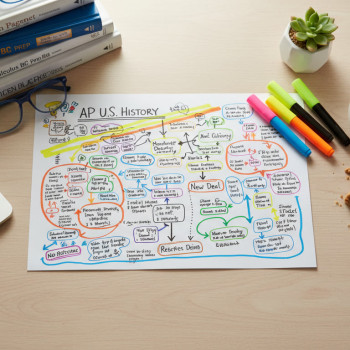Opening the Computer Science Conversation: Why This Comparison Matters
If you or your student is staring down a high school roadmap that includes both AP classes and the Digital SAT, you re not alone. Computer science is one of the most exciting and practical subjects a student can study in high school whether they re aiming for a tech major, a practical skill set, or simply a powerful extracurricular credential. But there s often confusion about how AP Computer Science A (CSA), AP Computer Science Principles (CSP), and SAT-related decisions (sometimes discussed as “SAT signaling” or score-sending strategy) fit together. Which should your student prioritize? How do colleges view each? And how can tailored support like Sparkl s 1-on-1 guidance, tailored study plans, expert tutors, and AI-driven insights help turn uncertainty into confidence?

Quick Definitions: AP CSA, AP CSP, and SAT Signaling
AP Computer Science A (CSA)
AP CSA is the Java-focused, code-heavy AP course. Think of it as the class that teaches you how to write, debug, and analyze programs. It mirrors a first-semester college course in programming, emphasizes object-oriented design, and tests students with multiple-choice and free-response questions that require actual code-writing and algorithmic thinking.
AP Computer Science Principles (CSP)
AP CSP is broader and more conceptual. It explores computing through real-world problems: data, the internet, algorithmic thinking, creativity, and the societal impacts of technology. CSP includes a performance task (a project you build and submit) that demonstrates your ability to design and develop computational artifacts and explain their process and impact.
SAT Signaling (and Digital SAT Considerations)
“SAT signaling” is shorthand for the strategy behind which SAT scores you send to colleges and when. With many colleges now test-optional or test-flexible, the decision to submit a Digital SAT score or to withhold it is strategic. Students weigh whether a score strengthens their application relative to the college s typical admitted ranges, and sometimes save their strongest scores for selective applications or scholarship consideration.
Different Goals, Different Strengths: What Each One Shows a College
AP exams and SAT scores tell admissions officers different things. Think of them as complementary signals.
- AP CSA: Demonstrates concrete programming proficiency and readiness for rigorous CS coursework. It s the I can code and think like a developer signal.
- AP CSP: Signals breadth understanding of data, networks, ethics, and the creative uses of computing. It shows curiosity about the field s societal role.
- SAT (Digital): Measures core academic skills reading, writing, math on a standardized scale. Sending a strong SAT score can bolster an application where grades or coursework are uneven, or when a college still values standardized metrics.
When to Take AP CSA vs. AP CSP (and Can You Take Both?)
Short answer: yes, you can take both and many students do. Which to take (or which to prioritize) depends on interests, timing, and goals.
Choose AP CSP if:
- You re newer to computing and want a conceptual foundation without heavy language-specific coding.
- You enjoy interdisciplinary work projects, data exploration, and technology s societal impact.
- You want an AP course that values creativity and a project-based performance task.
Choose AP CSA if:
- You enjoy programming challenges and want a deep dive into object-oriented design, algorithms, and coding with Java.
- You plan to major in computer science, software engineering, or a closely related technical field.
- You want to show concrete, college-level programming ability to admissions and placement offices.
Pairing them for maximum impact
Taking CSP first can build confidence and context before diving into the syntactic rigor of CSA. Colleges like to see both breadth and depth: CSP shows you understand the “why” and impact of computing, CSA proves you can do the technical “how.” If your schedule allows, a CSP CSA progression is a natural path.
How Colleges Use These Signals in Admissions
Admissions teams use AP and SAT signals in different ways. AP scores sometimes translate to college credit or advanced placement, which can shape course placement. SAT scores still provide a standardized comparator across different high schools and regions useful when evaluating class rank or GPA variance.
- Credit and placement: Depending on the college, a strong AP CSA score (or CSP in some cases) can earn credit or placement out of introductory courses.
- Admissions context: AP coursework tells colleges about academic challenge and initiative. High-level APs, especially in a student s intended major, are a strong indicator of commitment.
- Score submission strategy: For the SAT, many students take the test and decide whether to submit based on how the score compares to the college s typical admitted student range.
AP Exam Structure vs. Digital SAT: What to Expect
Understanding the format helps students study smart.
| Assessment | What It Tests | Format Highlights | What Success Looks Like |
|---|---|---|---|
| AP CSA | Java programming, algorithms, OOP | Multiple-choice + free-response coding tasks | Ability to design classes, trace code, write correct algorithms |
| AP CSP | Computational thinking, data, internet, impacts of computing | Multiple-choice + Create performance task (project) | Strong project, clear explanation of development process and impact |
| Digital SAT | Reading, Writing & Language, Math (digital format) | Adaptive digital test, shorter sections, built-in tools | Consistent foundational skills, quick problem-solving, time management |
Practical Examples: Choosing Based on Intended Major and Timeline
Here are three realistic student profiles and sensible strategies for each.
Student A: The Aspiring Computer Scientist
Background: Loves coding, built a few independent projects, plans to major in CS at a selective university.
- Recommended path: Take or self-study AP CSA (tackle Java fundamentals, algorithms) and AP CSP if schedule allows (for breadth). Prioritize AP CSA for showing concrete programming readiness.
- SAT strategy: Aim for a strong Digital SAT score to complement GPA and AP rigor submit if it s at or above the college s middle 50% range.
- How tutoring helps: Sparkl-style personalized tutoring can provide focused 1-on-1 coding practice, mock AP free-response prompts, and targeted feedback on projects and code style.
Student B: The Interdisciplinary Problem Solver
Background: Interested in data science, social impact, or design with tech. Enjoys project work and exploring real problems.
- Recommended path: AP CSP first, to develop project thinking, data literacy, and ethical context. Consider AP CSA later if you want deeper coding skills.
- SAT strategy: A solid Digital SAT score rounds out the application if the score strengthens the narrative, send it; otherwise, rely on AP projects and coursework.
- How tutoring helps: Personalized tutoring can coach project planning for the CSP performance task, critique portfolio artifacts, and help build data analysis skills.
Student C: The Busy Multi-Tasker
Background: Juggles academics, extracurriculars, and perhaps a part-time job. Wants to keep college options open without overloading senior year.
- Recommended path: Pick the AP course that aligns most with current strengths (CSP for project-based, CSA if you already code). Focus on one AP exam to do it well.
- SAT strategy: Take the Digital SAT when you can prepare properly; use score-choice strategy to send only your best results.
- How tutoring helps: Targeted sessions can maximize study efficiency Sparkl s tailored plans are ideal for focused practice and flexible scheduling.
Performance Tasks, Projects, and Portfolios: Why CSP s Create Task Matters
AP CSP s Create performance task is a unique asset. It s more than a test: it s a demonstrable project that shows how a student approaches problems, crafts solutions, and communicates technical ideas. That project can live in a portfolio, be mentioned in essays, and sometimes form the basis of interview conversations.
- Admissions value: A well-documented, meaningful CSP project reveals initiative, creativity, and collaboration.
- Scholarship value: Project artifacts can support applications for research programs, internships, or summer experiences.
- How tutoring helps: Expert tutors can give feedback on project planning, debugging strategies, and how to frame the work clearly for reviewers.
How to Combine AP Scores and the SAT in Your Application Strategy
Here s a practical playbook parents and students can use to decide what to show colleges.
- Inventory your strengths: High AP scores in relevant courses plus a strong SAT can be persuasive. If your AP program shows rigor, colleges take note.
- Match to colleges: Check individual college policies for AP credit and placement. If a school grants credit for AP CSA, a strong score could give you a semester head start.
- Use score submission wisely: If your Digital SAT score is below a college s typical range, consider applying test-optional (if allowed) and focus on AP success and the rest of your application.
- Tell the story: Use essays and activity descriptions to connect AP work and SAT decisions into a coherent narrative about academic growth and interest in computing.
Study Tips: How to Prepare for AP CSA, AP CSP, and the Digital SAT
Preparation is both skill-building and strategy. Below are focused tips you can put into action.
AP CSA Study Tips
- Practice writing code by hand and in an IDE both matter for exam-style problem solving.
- Master object-oriented concepts: classes, inheritance, encapsulation.
- Work timed free-response questions to get comfortable with producing correct and efficient code under pressure.
AP CSP Study Tips
- Choose a Create project that solves a real problem and documents the iterative process clearly.
- Practice analyzing data sets and explaining computational impacts in plain language.
- Collaborate and get feedback CSP values communication and ethical reasoning as much as technical fluency.
Digital SAT Study Tips
- Simulate the digital testing environment to get comfortable with built-in tools and adaptive sections.
- Focus on foundational skills reading comprehension, algebra, and problem-solving speed.
- Use practice tests to refine pacing and familiarize yourself with question types.
How Personalized Tutoring Makes a Real Difference
Generic study plans can t account for individual gaps, schedules, or learning preferences. Personalized tutoring matters because it adapts to the student s timeline and the specific demands of AP exams and the Digital SAT. For example, Sparkl s personalized tutoring model blends 1-on-1 guidance, tailored study plans, expert tutors, and AI-driven insights to create focused practice that targets weak spots without wasting time on mastered skills.
- One-on-one guidance helps students practice real AP free-response and project documentation with targeted feedback.
- Tailored study plans balance AP coursework and SAT prep, preventing burnout in busy schedules.
- AI-driven insights can highlight recurring mistakes and accelerate learning through smart practice cycles.
Common Myths and Straightforward Truths
Let s bust some myths so you can plan with clarity.
- Myth: AP scores always beat SATs in admissions. Truth: Both serve different purposes; strong AP coursework shows mastery in a subject, while SATs provide a standardized comparison.
- Myth: You must take AP CSA to study CS in college. Truth: AP CSA helps, but colleges value demonstrated interest, projects, course rigor, and context just as much.
- Myth: If a college is test-optional, skip the SAT entirely. Truth: If you can submit a score that strengthens your profile, it can still help decide strategically.
Checklist: Preparing in the Year Before Applications
- Finalize which AP exams you ll take and map deadlines for the CSP Create task or AP digital submissions.
- Schedule Digital SAT attempts early enough to allow for retakes if improvement is needed.
- Build a portfolio: projects, code samples, and CSP artifacts that highlight your best work.
- Use targeted tutoring sessions for mock exams, timed practice, and project feedback.
- Talk to your counselor about how AP credits might translate at schools of interest.
Final Thoughts: Strategy Over Stress
AP CSA, AP CSP, and Digital SAT signaling are not competing forces they are pieces of an intelligent strategy. AP courses let you demonstrate depth and meaningful work in computer science; CSP s project-based approach gives you a tangible artifact to show curiosity and initiative; CSA proves you can handle coding challenges. The Digital SAT provides a standardized snapshot of academic readiness that can either bolster or be optional in your application narrative.
Choose your path with intent. If coding is your passion, prioritize CSA and meaningful projects. If you re exploring computing as one of several interests, CSP s breadth is a wonderful starting point. And when it comes to the Digital SAT, treat score submission as a strategy: send a score when it amplifies your story.

Finally, remember that tailored support can change everything. Focused, personalized tutoring like the 1-on-1 guidance and tailored study plans offered by Sparkl can turn the difference between guessing and knowing what to practice, how to present projects, and when to send scores. With good planning, realistic pacing, and targeted help, students can build a compelling, authentic application that shows both their computational skills and the curiosity behind them.
Action Steps for This Week
- List the AP and SAT dates you plan to take and pin them on a calendar.
- Pick one small, finishable programming task or CSP project milestone to complete in seven days.
- Take one short Digital SAT practice section under timed conditions to benchmark where to focus.
- If you want personalized support, schedule an exploratory tutoring session to build a targeted study plan.
Parting Encouragement
This journey is not about a single test or a single AP score. It s about building skills, telling your story, and making choices that reflect who you are and who you want to become. Whether you choose AP CSA, AP CSP, a smart SAT strategy, or a mix of all three do it with curiosity, realistic goals, and a support system that nudges you forward when the going gets tough. You don t have to navigate it alone; strategic tutoring and a thoughtful plan can make the path clearer and more enjoyable.
Good luck code boldly, think broadly, and send the scores that help your story shine.

















No Comments
Leave a comment Cancel